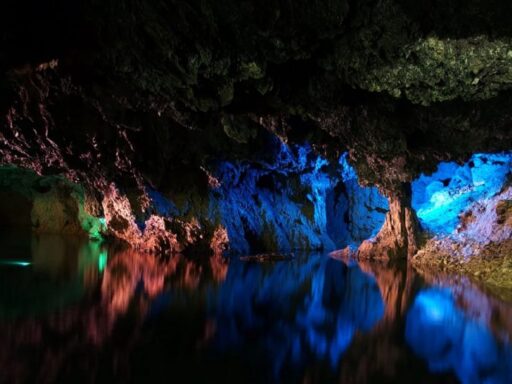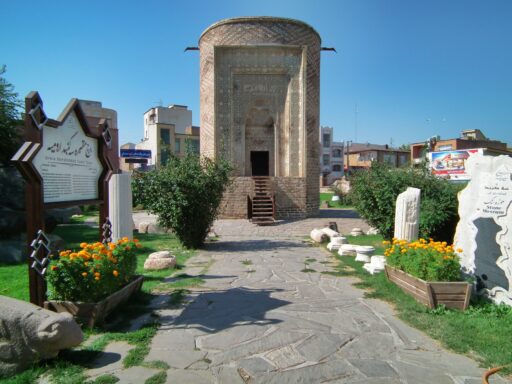Introducing The Incredible Monar Jonban
The Monar Jonban, meaning “the shaking minarets”, is one of the most intriguing historical structures in the Iranian city of Isfahan. This fascinating monument features two tall minarets that sway when one of them is shaken – yet they never collide. Built in the 14th century, the Monar Jonban has mystified visitors for centuries with its unique engineering and architecture. Beyond its curiosity-sparking minarets, the site features intricate brickwork and a scenic location. Read on to learn all about the history, architecture, and experience of visiting this captivating Isfahan landmark.
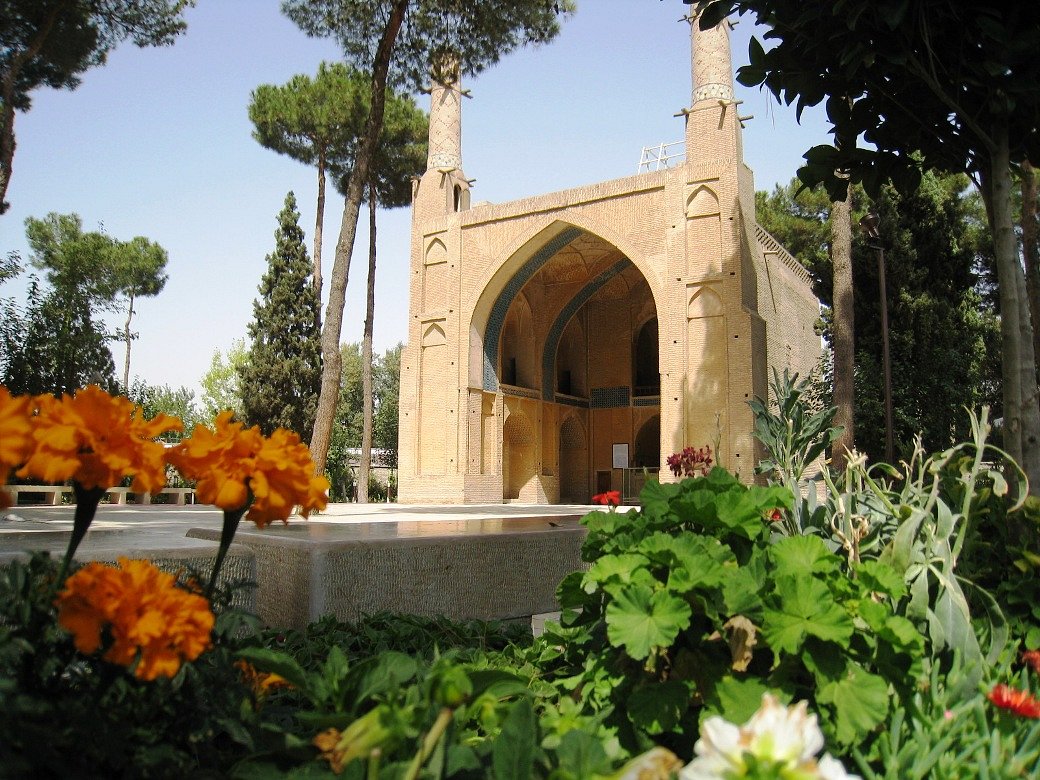
History and Significance
The Monar Jonban was built in the Ilkhanate period under Mongol rule during the 14th century. It served as part of a larger religious complex that included a mosque, tomb, school, and cisterns. Over time the surrounding structures were destroyed, leaving only the two stunning minarets that stand today.
The minarets measure 17 meters tall and feature intricate patterns of red brickwork that dazzle when hit by sunlight. Their striking design incorporates strips of calligraphy and vegetal patterns made from brick. The minarets were likely built in celebration of the Ilkhanate rulers’ conversion to Islam.
The most intriguing feature is the way the minarets sway. Visitors can climb up a winding staircase to reach narrow viewing platforms on each minaret. As you stand on one platform, you can then rock the minaret gently back and forth. This causes the other minaret to move in reply, mirroring the rocking motion. The columns sway but never collide, showcasing the masterful medieval engineering.
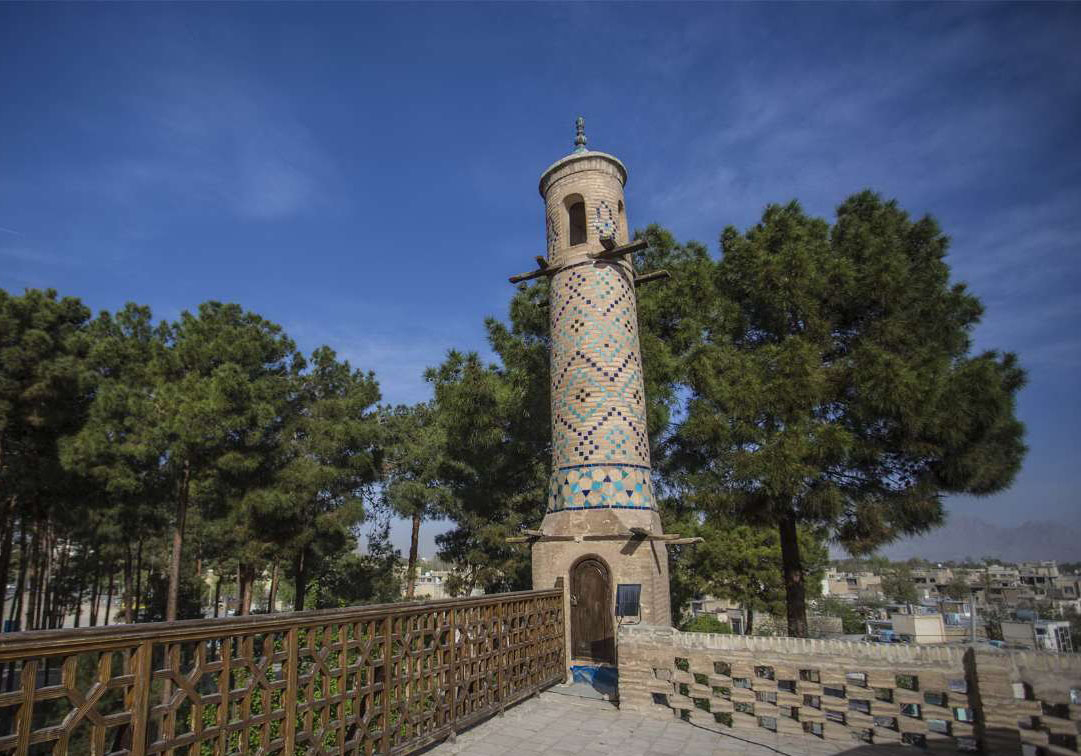
Unique Architecture of the Minarets
The Monar Jonban’s two minarets are octagonal columns built from red brick and perched atop stone bases. They feature elaborately patterned brickwork arranged in intricate geometric shapes and calligraphy – motifs that were common in Ilkhanate Islamic architecture.
The upper part of each minaret contains open muqarnas, which are the tiny niches stacked in tiers that form a honeycomb pattern. These give a decorative flourish. Just below sits a circular balcony wrapped around the top, providing panoramic views over Isfahan.
The columns are connected via two double arches made of brick. The arches form a pathway at their base which visitors can walk under and look up to admire the decorative brickwork. From the ground, the contrast between the stone bases and the deep red brick columns is very eye-catching.
Crowning each minaret is an onion-shaped cupola covered in dark blue tiles. The cupolas help draw the eye upward to fully admire the vertical elegance of the columns. Their shape gives a distinctive Persian touch.
The minarets’ ingenious design allows them to rock but not collapse. This is due to the connectors between them and the balance of their weight distribution. Even with the swaying motion, they always return to a stable position upright.
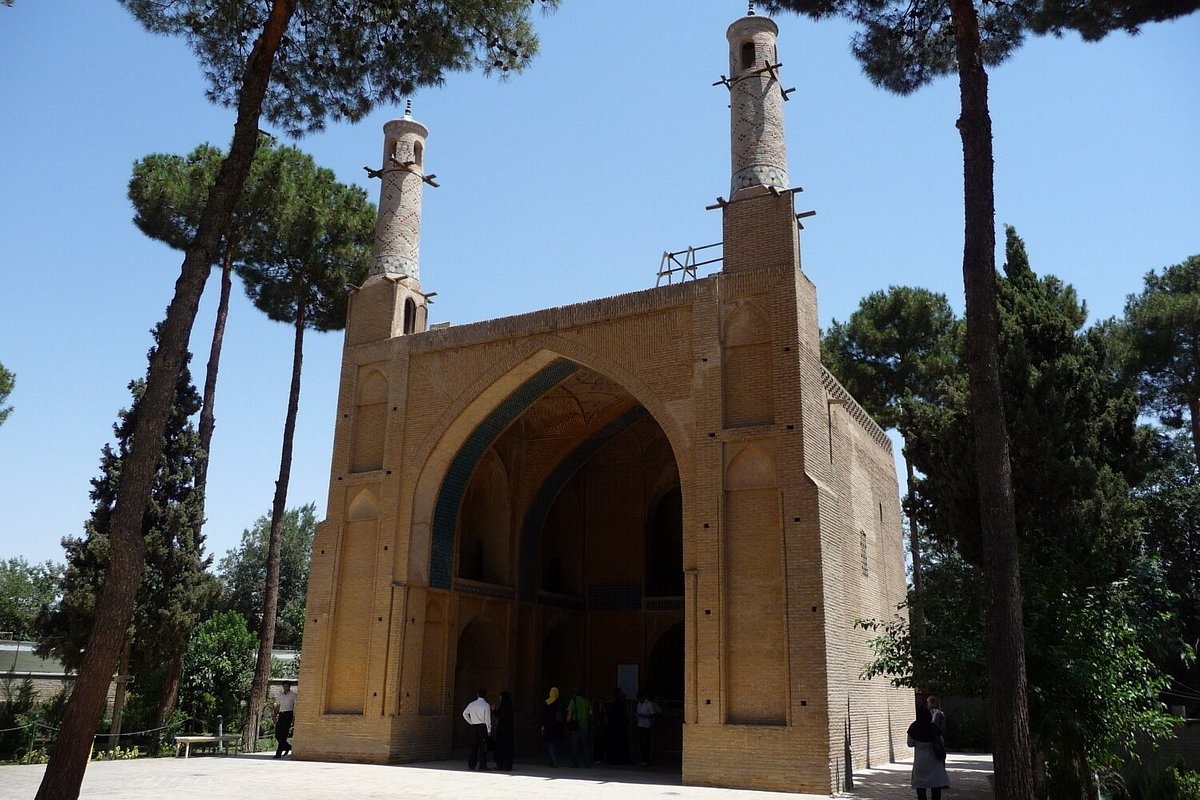
Surrounding Scenery
The Monar Jonban stands isolated today in a grassy field, providing plenty of space to walk around and admire the swaying minarets from all sides. Two paved roads cross in front set against the picturesque backdrop of the Mount Karkas mountains.
The ruins of other ancient structures are scattered through the grass nearby. Palm trees and small gardens of flowers can also be found, giving lush touches of color.
One advantage of the location is how the minarets stand out strikingly against the clear blue sky. On a sunny day, the red brickwork seems to glow and gleam in the light. The scenic mountain views complete the atmospheric setting of this intriguing monument.
Visiting the Monar Jonban
The Monar Jonban is located a short drive west of central Isfahan in the Julfa district of the city. It can be visited by taxi or as part of an organized group tour. There is a small entrance fee of around 5,000 IRR per person.
The best time to visit is in the late afternoon when the sun lights up the brickwork and the minarets cast long shadows. The site stays open into the evening. Visiting at dusk offers an extra magical experience as the minarets are silhouetted against the colorful sunset.
When visiting, don’t forget to walk all around the complex to admire the intricacies of the brickwork patterns and muqarnas niches. Try standing directly underneath one of the minarets to see the full height. You can also gently rock one column and watch the other sway in return – but take care not to shake with too much force.
Allow some time to climb up the staircase within one of the minarets to reach the upper viewing platform for panoramic vistas over Isfahan. Take photos capturing the ornate details of the minarets and the natural scenery that surrounds them.
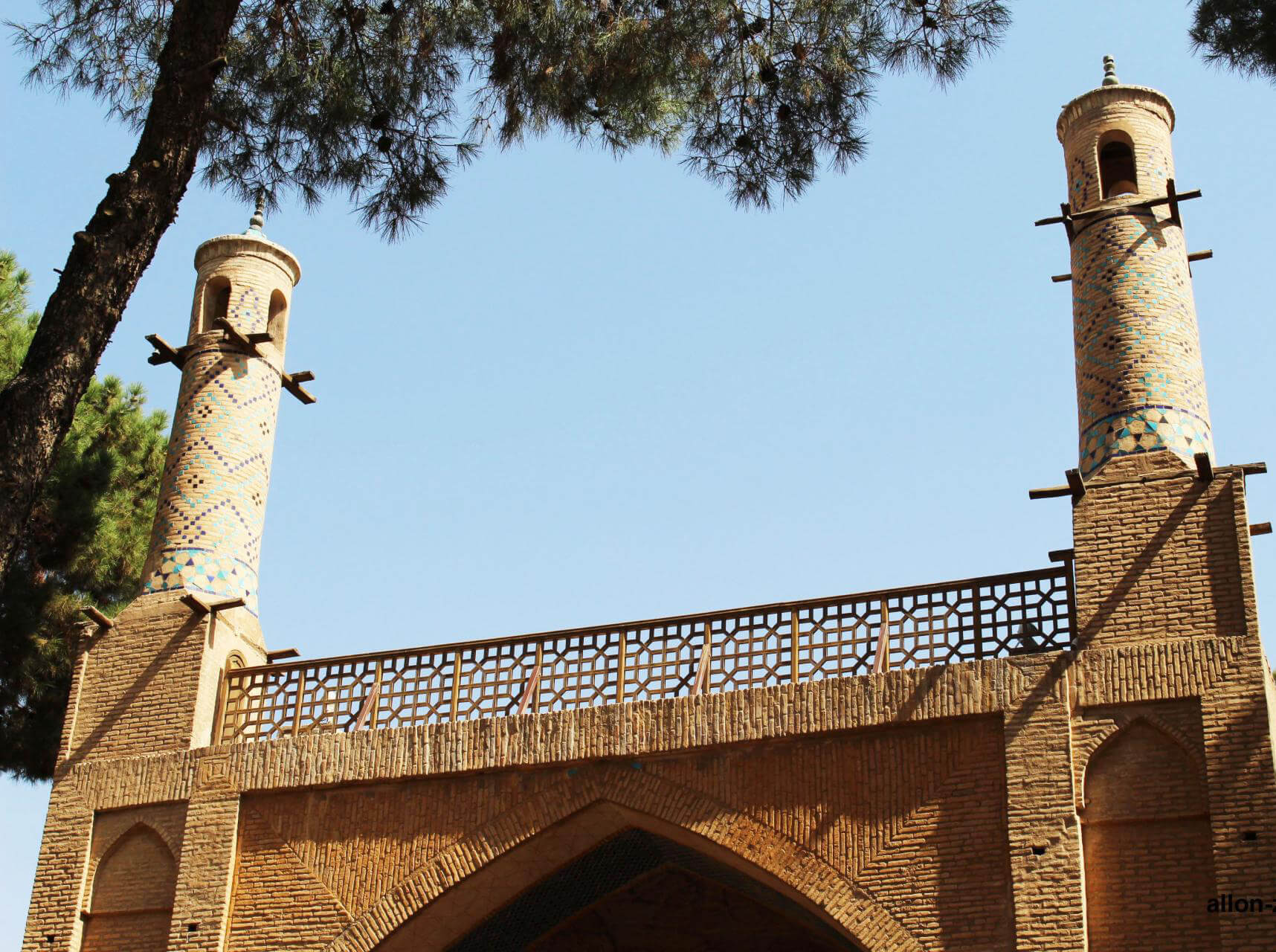
Final Thoughts
The enchanting Monar Jonban with its mystical swaying minarets remains one of Isfahan’s most fascinating gems. This medieval architectural marvel showcases both striking beauty and unbelievable engineering capabilities. Beyond just a curiosity, the elegant brickwork makes the Monar Jonban an artistic treasure as well.
Visiting these intertwined minarets feels like stepping back in time, giving insight into Isfahan’s history as a center for art and science during the Islamic era. The Monar Jonban’s unique magic continues to inspire awe and joy in those who visit. No trip to Isfahan is complete without spending some time admiring these majestic minarets and watching them rock and sway in mesmerizing motion. This is truly one of Iran’s most captivating and photogenic attractions.


